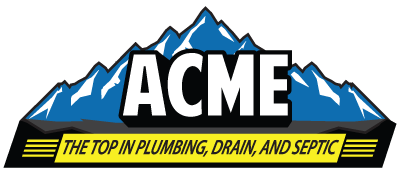How to Handle a Septic Tank Overflow: Emergency Tips and Tricks
A septic tank overflow is a serious emergency that can cause extensive damage to your home and property if not handled promptly. The resulting mess is not only unpleasant and unsanitary, but it can also pose health risks due to the harmful bacteria and chemicals present in the wastewater. Understanding how to deal with a septic tank overflow quickly and effectively can help minimize damage and restore your system to normal function.
Recognizing the Signs of a Septic Tank Overflow
Before diving into emergency procedures, it's important to recognize the signs of a septic tank overflow:
Slow Drains: If multiple drains in your home are slow or gurgling, this could be a sign that your septic tank is full or there is a blockage.
Sewage Backup: One of the most obvious signs is sewage backing up into your home, especially in the lowest drains like basement bathrooms.
Wet Spots in the Yard: Patches of overly green grass or standing water around your septic tank or drain field can indicate a leak or overflow.
Foul Odors: A strong sewage smell coming from your drains, toilets, or near the septic tank is a clear indicator of a problem.
Emergency Steps to Take During a Septic Tank Overflow
If you notice any of the above signs, it’s crucial to act quickly to mitigate the damage. Here’s what you should do:
Stop Using Water Immediately
The first and most important step is to stop using water in your home. This includes not running dishwashers, washing machines, and avoiding flushing toilets. This will help prevent more wastewater from entering the already overloaded septic system and potentially worsening the situation.
Locate and Assess the Source of the Overflow
If it’s safe, try to identify where the overflow is coming from. If the overflow is happening in your yard near the septic tank or drain field, keep a safe distance. If sewage has backed up into your home, avoid contact with the contaminated water as it can carry harmful pathogens.
Alert a Professional Immediately
Contact a licensed septic tank service company as soon as possible. Dealing with a septic tank overflow requires specialized equipment and expertise, and attempting to fix the problem yourself could lead to further damage or health risks. A professional can assess the situation, pump the septic tank, and repair any damage to the system.
Avoid Contact with Contaminated Water
Sewage contains bacteria, viruses, and other pathogens that can cause serious illness. Avoid coming into contact with any overflow or standing water. If you must enter the area, wear protective gear such as rubber gloves, boots, and a mask. Be sure to thoroughly wash and disinfect any skin or clothing that comes into contact with the wastewater.
Limit Access to the Affected Area
Keep children and pets away from the affected area, both inside your home and outdoors. This will prevent accidental contact with contaminated water and reduce the risk of spreading bacteria or other pathogens throughout your home.
Document the Damage
Take pictures and notes of any damage caused by the septic tank overflow. This documentation will be useful if you need to file an insurance claim. Be sure to include any damages to your property, such as flooring, walls, furniture, and outdoor landscaping.
Prepare for Clean-Up and Disinfection
Once the professionals have dealt with the septic tank, you’ll need to address the clean-up. Depending on the extent of the overflow, you may need to hire a professional cleaning service that specializes in biohazard or sewage clean-up. They will have the proper tools and chemicals to safely clean and disinfect your home.
Preventing Future Septic Tank Overflows
While emergencies can’t always be avoided, there are steps you can take to reduce the risk of a septic tank overflow:
Regular Maintenance: Schedule regular inspections and septic tank pumping, typically every 3-5 years depending on usage.
Water Conservation: Reduce water usage in your home to prevent overwhelming your septic system. Fix leaks promptly and consider installing water-efficient fixtures.
Mindful Disposal: Never flush non-biodegradable items, grease, or harsh chemicals down your drains. These can cause blockages and disrupt the natural bacteria in your septic tank.
Dealing with a septic tank overflow is a stressful experience, but taking immediate action can help minimize damage and health risks. Always prioritize safety and contact a professional to address the situation. Regular maintenance and mindful practices can go a long way in preventing future overflows and ensuring your septic system functions smoothly.
